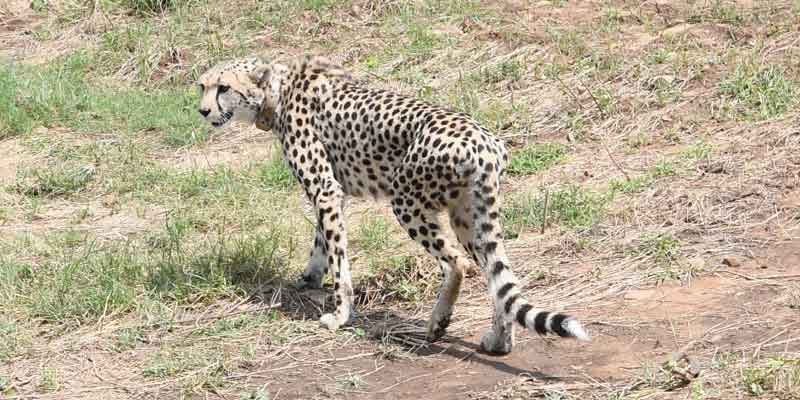- India
- Jan 28
India to get 12 cheetahs from South Africa in February
• A dozen cheetahs from South Africa are likely to be flown into India in February and housed in the Kuno National Park (KNP) in Madhya Pradesh.
• A Memorandum of Understanding (MoU) was signed between India and South Africa last week.
• Following the import of 12 cheetahs in February, the plan is to translocate a further 12 annually for the next eight to 10 years.
• On September 17, 2022, Prime Minister Narendra Modi had released eight cheetahs flown in from Namibia into the KNP.
• The cheetahs have been brought to the park as part of an intercontinental translocation project to reintroduce the feline in India seven decades after it was declared extinct in the country.
Significance of cheetah reintroduction
• Cheetah, the world’s fastest land animal, got completely wiped out from India due to their use for coursing, sport hunting, overhunting and habitat loss.
• Cheetahs don’t need much water and can survive in dry forests, grasslands, open plains and desert regions.
• The last cheetah died in the country in 1947 in Korea district in present-day Chhattisgarh and the animal was officially declared extinct in 1952.
• Cheetah is considered vulnerable under the International Union for Conservation of Nature’s (IUCN) red list of threatened species, with a declining population of less than 7,000 found primarily in African savannas.
• The main goal of cheetah reintroduction project in India is to establish viable cheetah metapopulation in India that allows the cheetah to perform its functional role as a top predator and provides space for the expansion of the cheetah within its historical range thereby contributing to its global conservation efforts.
MoU with South Africa
• The multi-disciplinary international programme is being coordinated by the Department of Forestry, Fisheries and the Environment (DFFE), South Africa in collaboration with the South African National Biodiversity Institute (SANBI), South African National Parks (SANParks), the Cheetah Range Expansion Project, and the Endangered Wildlife Trust (EWT) in South Africa together with the National Tiger Conservation Authority (NTCA) and the Wildlife Institute of India (WII).
The MoU on reintroduction of cheetah to India facilitates cooperation between the parties to:
i) Establish a viable and secure cheetah population in India.
ii) Promote conservation.
iii) Ensure that expertise is shared and exchanged, and capacity built to promote cheetah conservation.
• This includes human-wildlife conflict resolution.
• The countries will collaborate and exchange best practices in large carnivore conservation through the transfer of technology, training of professionals in management, policy, and science, and to establish a bilateral custodianship arrangement for cheetah translocated between the two countries.
Kuno National Park
• Kuno National Park was established in Madhya Pradesh in 1981. It was also known as Kuno-Palpur and Palpur-Kuno Wildlife Sanctuary.
• Spread over 748 sq km, KNP has an adequate prey base. It is devoid of human settlements, forms a part of the Sheopur-Shivpuri deciduous open forest landscape.
• The carrying capacity can be further enhanced by including the remaining part of the Kuno Wildlife Division (1,280 sq km) through prey restoration.
• KNP is situated on the northern side of Vidhyachal mountains and draws its name from a tributary of the Chambal river, Kuno.
Manorama Yearbook app is now available on Google Play Store and iOS App Store


